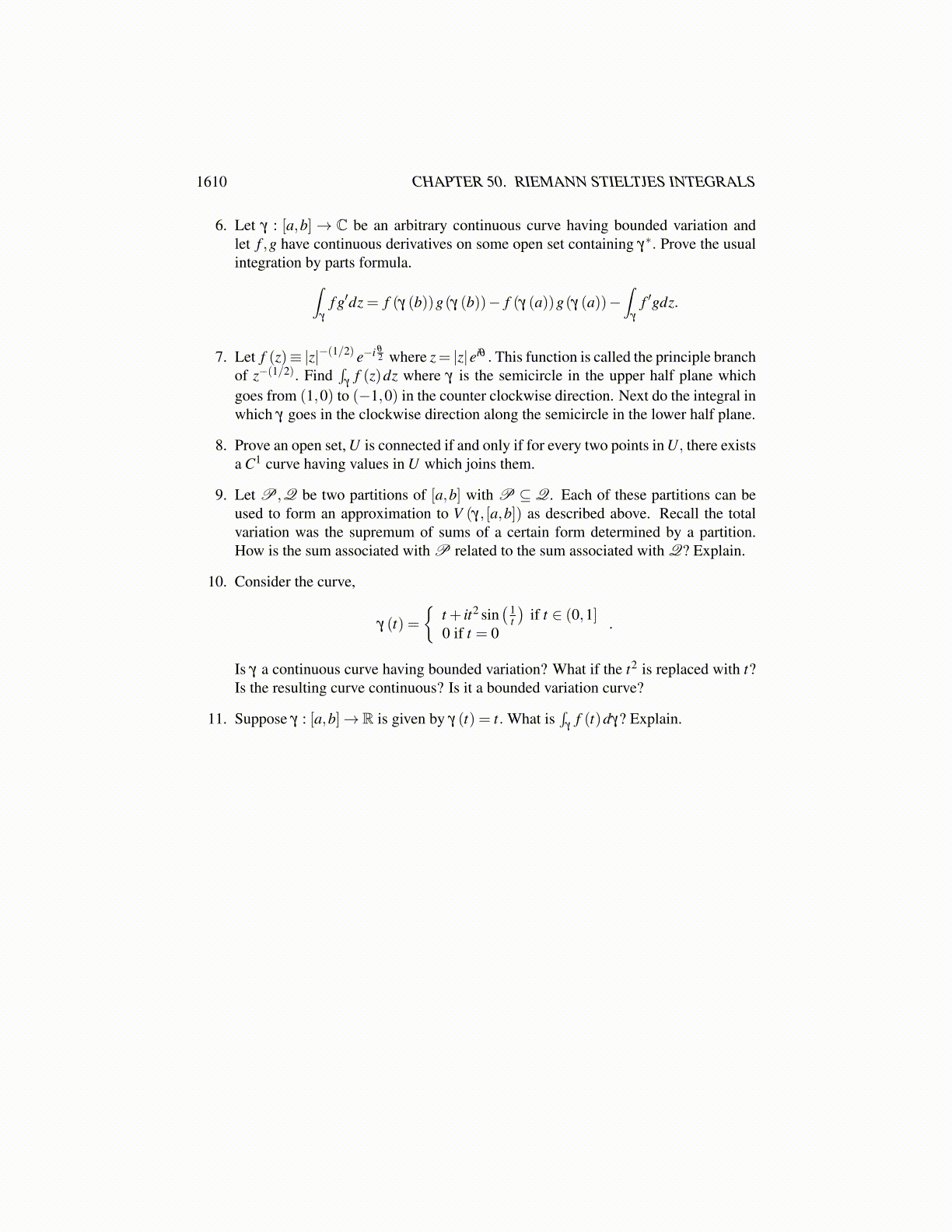
1610 CHAPTER 50. RIEMANN STIELTJES INTEGRALS
Corollary 50.0.14 If γ : [a,b]→C is continuous, has bounded variation, is a closed curve,γ (a) = γ (b) , and γ∗ ⊆Ω where Ω is an open set on which F ′ (z) = f (z) , then∫
γ
f (z)dz = 0.
Another important result is a Fubini theorem for these contour integrals.
Theorem 50.0.15 Let γ i be continuous and bounded variation. Let f be continuous onγ∗1× γ∗2 having values in X a complex complete normed linear space. Then∫
γ1
∫γ2
f (z,w)dwdz =∫
γ2
∫γ1
f (z,w)dzdw
Proof: This follows quickly from the above lemma and the definition of the contour in-tegral. Say γ i is defined on [ai,bi]. Let a partition of [a1,b1] be denoted by {t0, t1, · · · , tn}=P1 and a partition of [a2,b2] be denoted by {s0,s1, · · · ,sm}= P2.∫
γ1
∫γ2
f (z,w)dwdz =n
∑i=1
∫γ1([ti−1,ti])
∫γ2
f (z,w)dwdz
=n
∑i=1
m
∑j=1
∫γ1([ti−1,ti])
∫γ2([s j−1,s j])
f (z,w)dwdz
To save room, denote γ1 ([ti−1, ti]) by γ1i and γ2([
s j−1,s j])
by γ2 jThen if ∥Pi∥ , i = 1,2 issmall enough, ∥∥∥∥∥
∫γ1i
∫γ2 j
f (z,w)dwdz−∫
γ1i
∫γ2 j
f (γ1 (ti) ,γ2 (s j))dwdz
∥∥∥∥∥=
∥∥∥∥∥∫
γ1i
∫γ2 j
( f (z,w)− f (γ1 (ti) ,γ2 (s j)))dwdz
∥∥∥∥∥≤max
(∥∥∥∥∥∫
γ2 j
( f (z,w)− f (γ1 (ti) ,γ2 (s j)))dw
∥∥∥∥∥)
V (γ1, [ti−1, ti])
≤ εV(γ2,[s j−1,s j
])V (γ1, [ti−1, ti]) (50.0.15)
Also from this theorem,∥∥∥∥∥∫
γ2 j
∫γ1i
f (z,w)dzdw−∫
γ2 j
∫γ1i
f (γ1 (ti) ,γ2 (s j))dzdw
∥∥∥∥∥≤max
(∥∥∥∥∫γ1i
( f (z,w)− f (γ1 (ti) ,γ2 (s j)))dz∥∥∥∥)V
(γ2,[s j−1,s j
])≤ εV
(γ2,[s j−1,s j
])V (γ1, [ti−1, ti]) (50.0.16)